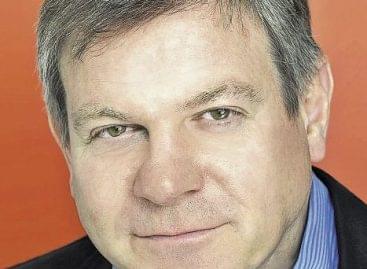Annual inflation fell slightly more than expected in March
In March 2025, the annual inflation rate in Hungary decreased to 4.7%, which exceeded analysts’ expectations. Although the rate of decrease is moderate, the trends observed based on monthly data show that inflationary pressures have noticeably eased in several sectors.
More significant slowdown in price increases
 While annual inflation was still 5.6% in February, it was only 4.7% in March, and prices did not change on a monthly basis. This figure is more favorable than the market consensus (0.3%) and supports the continuing trend of decreasing inflation. Core inflation also decreased: from 6.2% in February to 5.7%.
While annual inflation was still 5.6% in February, it was only 4.7% in March, and prices did not change on a monthly basis. This figure is more favorable than the market consensus (0.3%) and supports the continuing trend of decreasing inflation. Core inflation also decreased: from 6.2% in February to 5.7%.
Examining the structure of prices, the decrease in the rate of price increases for food, fuel and services was particularly striking. Fuel prices, for example, fell by 4.1%, while the growth in services, which had previously shown high monthly price increases, fell from 1.2% to 0.3%. In the food segment – which accounts for more than 30% of the consumer basket – there was no price increase in March, while in February a 1.2% increase was registered.
Outlook: the effect of price regulation is only just beginning
The full effect of the government’s price regulation measures in March is expected to be fully reflected in April’s inflation data. The first effect of the so-called “margin stop” introduced in March is encouraging: not only did prices decrease in the affected product groups, but there was no “compensatory price increase” in other products, which often occurs in similar situations.
According to experts, if the margin freeze persists in the long term and the pressure to increase prices does not spread to other sectors, annual inflation could fall below 4% in April. According to analysts at MBH Bank, the probability that the annual inflation average will remain below 5% in 2025 has increased.
Related news
K&H: what does child inflation show?
🎧 Hallgasd a cikket: Lejátszás Szünet Folytatás Leállítás Nyelv: Auto…
Read more >The forint may remain relatively strong, even permanently
🎧 Hallgasd a cikket: Lejátszás Szünet Folytatás Leállítás Nyelv: Auto…
Read more >Consumption is the gas pedal, industry is the brake: will there be a smooth landing in 2026?
🎧 Hallgasd a cikket: Lejátszás Szünet Folytatás Leállítás Nyelv: Auto…
Read more >Related news
Demand for plant-based protein is the engine of the European nut market
🎧 Hallgasd a cikket: Lejátszás Szünet Folytatás Leállítás Nyelv: Auto…
Read more >Wineries reloaded: the second generation is coming
🎧 Hallgasd a cikket: Lejátszás Szünet Folytatás Leállítás Nyelv: Auto…
Read more >Lidl Parent Schwarz Group Sets New Recycling Target
🎧 Hallgasd a cikket: Lejátszás Szünet Folytatás Leállítás Nyelv: Auto…
Read more >







